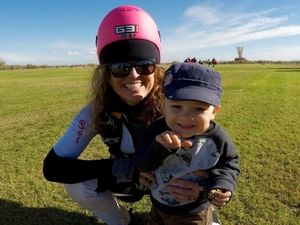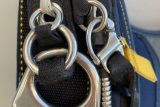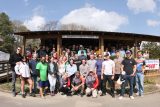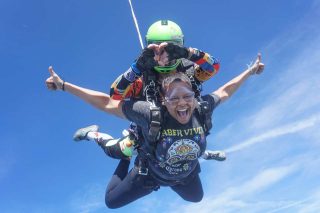World-record Skydiver, Melissa Nelson Lowe, Shares Invaluable Tips on Learning to Skydive
Interviews
8 years ago
Melissa Nelson Lowe is a third-generation skydiver who boasts more than 11,000 skydives, 18 world records in four different disciplines, and has been an AFF Instructor since 1999. Melissa has organized at Skydive Carolina’s Carolinafest and remains friends with DZO, Danny Smith. Here, Melissa shares her extensive experience for those interested in getting into the sport of skydiving.

Why Do You Jump?

If you are like me, after I made my first skydive, all I thought was how I wanted to do it again. Prepping for the jump to gear up was easy, but every time I got on the plane all I thought about was, “I don’t have to do this because my Dad does this!” Somehow I managed to muster enough courage to get to the door and jump. And every time I landed, I just wanted to go again!
Those early experiences have defined how I teach in the sport and there are a few things most people don’t think about when they embark on the journey to becoming a skydiver, that they need to know.
1. It’s Not About A Profile Pic
If you get into skydiving because you just want to look cool or need to update your profile pic, then skydiving isn’t for you. Skydiving is a dangerous sport. It requires respect for learning the principals of exiting, freefall, and canopy techniques to keep you safe as well as others.
2. YouTube Is Not Your Teacher

We live in an era where there is an incredible amount of information available to learn just about anything. Social media has exposed skydiving in such a great light showcasing the amazing things possible in our sport and helping increase numbers.
Every skydiving center has a program adapted from their experiences that make up a unique program based on USPA’s recommendations. Since skydiving is available to those of different ages, races, sexes, and experiences – it’s impossible to make a program that is one size fits all. This means the program is tailored to meet the student’s needs.
A student program also is tailored to give student’s information at certain stages. After a few jumps, then it’s possible to do more things. However, instructors will only task students who are ready to perform them.
I’ve had many students who watched EVERY YouTube video and read EVERY article known to man about skydiving. Although they spoke like a pro, they had ZERO experience. It basically boils down to: You have to learn to crawl before you walk.
3. Success Equals Treating Yourself Like An Athlete
I’ve heard many times over in my skydiving career that skydiving isn’t a sport. However, I’ve come to learn that it is EXACTLY that – a sport. I’ve watched students succeed when they emulate athletic qualities such as:
- Visualizing the Skydive
- There is nothing (except the freefall part of indoor skydiving) like skydiving, the more you train your mind on your tasks for a particular jump, the more prepared you’ll be on your skydive (I still do this on EVERY world record jump!)
- Stretching/Physical Exercise
- The old adage in skydiving is, “Skydiving is 90% mental, 10% physical.” True. Physical fitness prepares the body to cope with certain stress and have the energy to perform when needed and increases awareness – key characteristics that complement the sport of skydiving. (Yoga is a great activity that meets both strength and flexibility.)
4. Currency Equals Overcoming Fear And Safety
I’ve had the pleasure of being an instructor for A-license in a week camps. I would take students from their first class all the way to their A-license in just 1 week. I watched newbies go from complete fear of just opening the door to being independent and comfortable, taking charge on the jump in just ONE WEEK!
Not everyone has time and money to invest, and sometimes weather can be a foe, but my point is that currency is key. The more you can jump and the less time between jumps helps you become more proficient and comfortable instead of replaying the fear. When your current, you’re more aware.
5. Video Is A Tool, Not A Crutch
Video is without a doubt, the BEST tool for an instructor to help debrief students. It’s a clear and concise way to review a jump objectively. However, it is STILL IMPORTANT that you talk through your jump with your instructor BEFORE watching the video. This helps instill your awareness while working through the adrenaline.
It’s too easy just to talk about bits and pieces of a jump, but to REALLY maximize the use of video, it’s important to REMEMBER what happened, what YOU think YOU did, and how YOU would improve from exit, freefall, pull time, canopy control and landing. THEN, watch the video to see how accurately you remembered the jump.
Then, watch the video all the way through without interruption, and discuss with your instructor. AFTER the video, training is NOT over. The instructor should give you a few pointers and things to work on while on the ground to help you improve on the next jump.
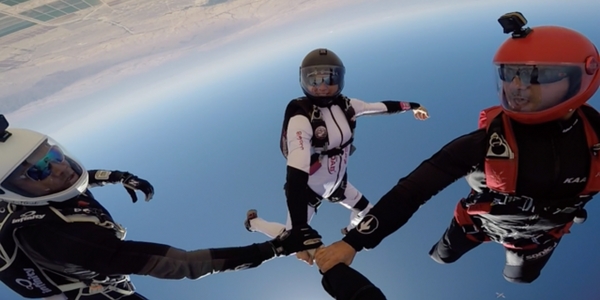
6. Not Every Instructor Is YOUR Instructor
My dad taught me how to skydive and that was awesome! However, he enabled a few bad behaviors that I didn’t realize were bad behaviors until later on! For example, my dad was a pioneering skydiver, perfecting techniques still used today. He was a great mentor and inspiring teacher. However, with me he was very protective … and understandably so. For example, he’d gear me up from head-to-toe without teaching me anything, showing me anything or letting me do anything on my own. He also talked me down from opening to landing without letting me figure it out. I didn’t know I had a choice, but looking back, I would have asked another instructor to jump with me so they could get a scope on what information I needed.
7. There’s No Such Thing As Failing A Level
We’re humans. We label everything from our earliest foundation through the rest of our lives. Back in school, if we didn’t pass a test, we failed. During adolescence, if we didn’t win a basketball game, we failed. In early adulthood, if you didn’t get that job, you failed. The fact that we label levels in skydiving is a pet peeve of mine.
I have eighteen world records and guess what – we NEVER got it on the first try! We did it over AND over again until we nailed it! We didn’t fail, we just had to work together to help each other perform our best until we all did it our best, all together, on the same skydive.
In the student program, if you didn’t “pass” a level, big deal. That jump STILL counts towards your A-license, and you get to do another coached jump. TAKE ADVANTAGE of having that EXTRA time with your instructor!
8. Do It For Yourself
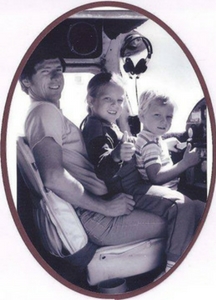
I’m the type of instructor that when I teach, I teach someone as if they’re going to be in the sport for a lifetime and that one day, they’ll be a world record holder. My goal is longevity, safety, awareness, and a lifetime of fun for my students. I’ve watched people come and go in the sport and mostly because they weren’t doing it for themselves.
I remember having to go through this myself since my family was immersed in the sport for 2 generations BEFORE me. When I made my first jumps all I said was, “I don’t have to do this because my dad does this.” But I did it anyway. Over time, people pointed at me and said, “Roger’s daughter” or “Rook’s sister” – no one would point to me and say MY name. That really bothered me and made me wonder if people perceived me that way. Was I holding onto their coattails? Was I not doing this for myself?
I didn’t grow up wanting to fly like Peter Pan or dream of skydiving. It was already an everyday thing in my life. For me, my sky journey took a lot of soul searching, currency, gaining experience, and falling in love with skydiving to figure this out. No one can tell you if skydiving is for you. But I do know this, the reward is great when you do it for yourself. And now, people know MY name.
Take Your Time – Cause It Takes Time
There’s a definite feeling of #FOMO in skydiving – especially since the advent of social media. There seems to be more of a rush to hurry up, get good, and get on the next cool thing than there ever has been. Here’s the secret….
WE LOOK BADASS BECAUSE WE’VE BEEN DOING THIS FOR A LOOOOOOOOOONNNNGGGG TIME!
There’s no sense of burning out early on. Take your time, soak it all in, enjoy the experiences the sport has to offer. I’ve seen so many people burn out quickly and quit skydiving because it didn’t fulfill them or they didn’t see results fast enough. The only way to get good is to be wise and take your time.
Respect the Sport
I think the best way to explain this is to outline a few topics:
- Giving advice:
Skydiving is a sport where there is no shortage of people who give advice – whether they are someone who just made their first jump, to hundreds. Giving advice at any stage is skydiving culture. This is how we learned and shared stories before everything was available online.
So this isn’t necessarily a bad thing, but if you aren’t an instructor, professional skydiver, S&TA… then begin your story with, I’m not an instructor, but this is my experience.
- Know When to Say “No”:
When you’re on student status, it almost seems like your instructor holds you back because of weather. It seems like there’s just a breath of wind or a tiny puffy cloud and you’re on a hold. This is your instructor not only keeping you safe but instilling awareness of weather, so you can eventually make that call for yourself.
When you’re off student status, it’s easy to be seduced into doing things that are beyond your skill level. As a load organizer, I’ll say no to jumping in high winds because I know if I go, my group (usually newer jumpers) will go. I’ve said no to going on big way dives that earn an invitation to a world record because I didn’t like how turbulent it was (I was still invited to that world record; and after that particular jump, the organizers said I was the only smart one for not jumping). I’ve said no because I just didn’t feel like it or felt rushed. I may have missed those jumps, but I have 11,000 other ones I’ve done. I often tell people that I have 11,000 jumps because I said NO, a lot.
- Buddy/buddy:
This is probably my biggest pet peeve. Let me be blunt: if ANYONE offers to sign you off for ANYTHING without having to do all the necessary steps, THEY ARE NOT YOUR FRIEND. They are doing a disservice to you and the safety of the sport.
It took me awhile to build this, but it is important for instructors and students to have boundaries. Once off student status, then cool. But I am a teacher. Now, I’m a mom. Boundaries are healthy. And they help build a solid foundation for our students. Usually, they stay in the sport longer, are safer, and become the next generation of leaders.
- Overall Safety:
Respect the sport. Take care of your gear. Know your gear. Know how to do a gear check. Keep up with maintenance. Check your gear. Check your friend’s gear.
Take advantage of weather days. Go to seminars. Read your manual.
Invest in your life. Skydive for a long time.
If you’d like to know more about Melissa Lowe, check out the following links. You may also reach out to her at Melissa@melissa-lowe.com.
- https://www.youtube.com/watch?v=s9rRLCIRYH0
- https://www.cypres.aero/catching-up-with-melissa-nelson-lowe/
- https://www.youtube.com/watch?v=LfWhVPgnsYs
